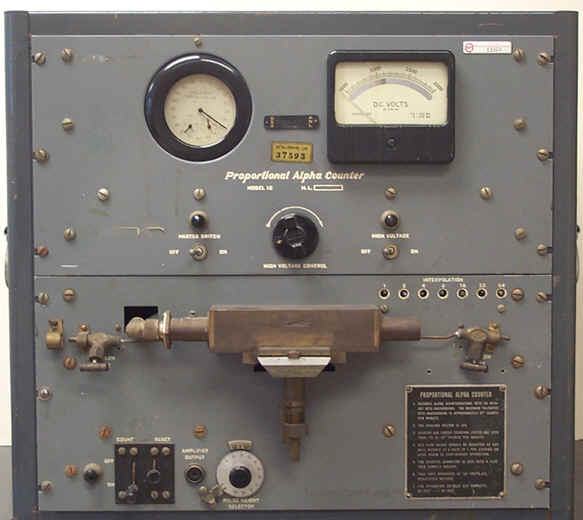First Generation Gas Flow Alpha Proportional Counter (ca. 1944)

The gas flow proportional counter for alpha counting was invented in 1943 by John Simpson at the University of Chicago Metallurgical Laboratory. Its purpose was to measure plutonium (an alpha emitter) in the presence of beta-emitting fission products. The key feature of this instrument that allowed it to reject beta pulses was its use of methane as the counting gas. Simpson would later invent P-10 gas (10% methane, 90% argon), the most widely employed gas in proportional counters. The instrument also featured a short time constant which reduced pulse pile up and assisted in rejecting the beta pulses.
By counting the sample inside a windowless chamber, the unit achieved a high detection efficiency and avoided the attenuation of alpha particle energy that would result if the radiation had to pass through a window.
The example in the photo still possesses its original Metallurgical Laboratory sticker (located just above the words "Proportional Alpha Counter"). The counting chamber is inside the rectangular brass box on the lower half of the unit. The end of the aluminum sample drawer can be seen just beneath the chamber. A seven light binary scale (1, 2, 4, 8, 16, 32, 64) is located on the middle right of the unit.
For details, see Manhattan Metallurgical Laboratory Reports, CP 1817, 1945; CP1527, 1944; and J. A. Simpson, A Precision Alpha-Proportional Counter Rev. Sci. Instr. 18:884; 1947.
Donated by Herbert Clark.
